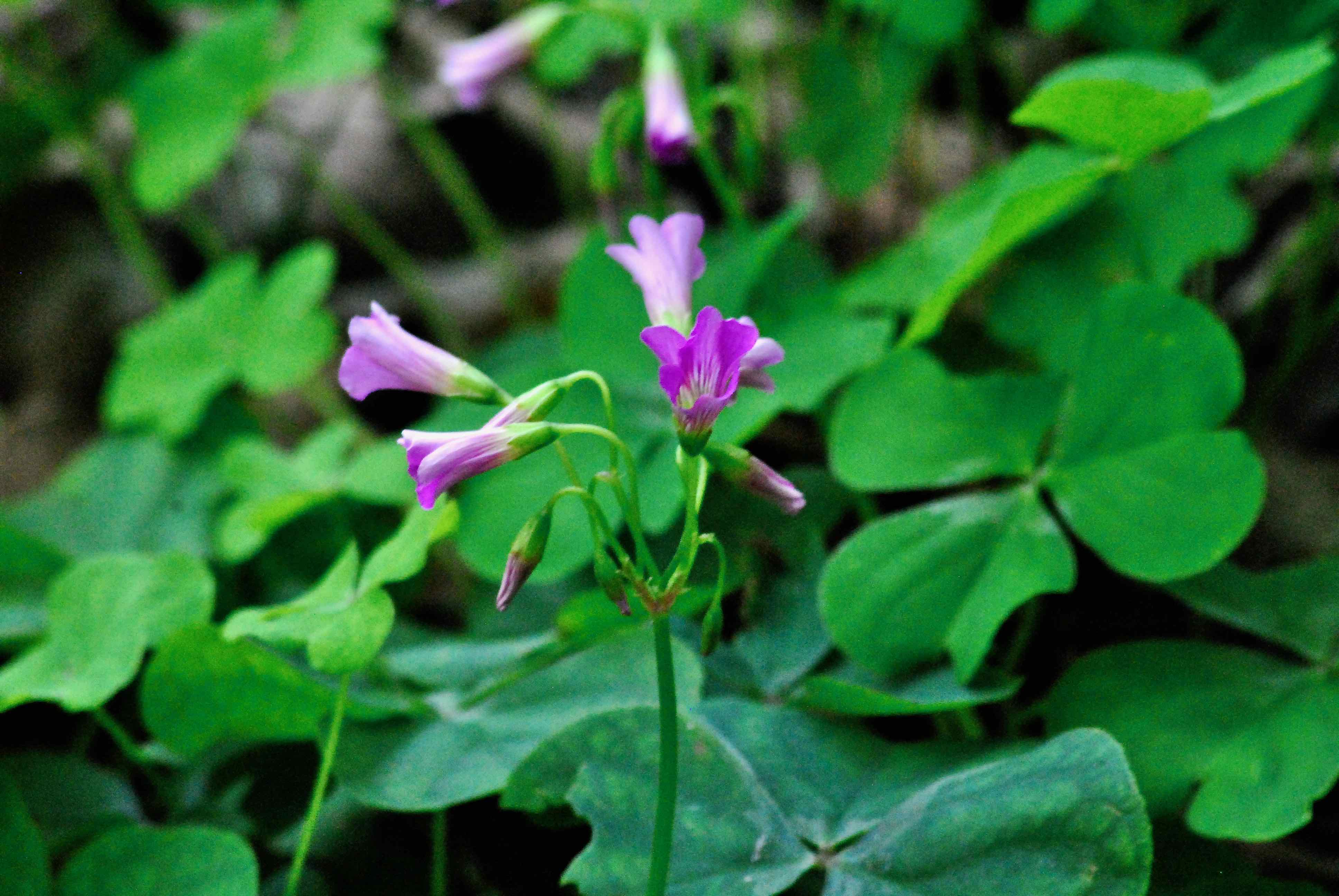
Pink wood sorrel, photogrphed at the Deering Estate, Coral Gables, Miami-Dade County, in February 2016.
This plant is a major pest for gardeners and landscapers. Pink wood sorrel, Oxalis debilis, is a plant you don't want to see growing in your yard, despite the gorgeous pink/violet flowers it produces.
It is a non-native brought to this country from tropical America as an ornamental plant. It has "escaped" cultivation and become "naturalized" throughout Florida and the southeastern United States as far north as South Carolina and as far west as Texas. According to the United States Department of Agriculture, it even has a foothold in Oregon. If we had our way, it would be banned as a noxious weed.
It is a member of the Oxalidaceae family, so named because its members contain oxalic acid. There are 30 members of the oxalis genus in the United States, six of which are found in Florida, three found in South Florida. Some are natives. The natives, such as yellow wood sorrel, Oxalis corniculata, have yellow, not pink, flowers.
The presence of oxalic acid gives the plant a sour taste similar to the garden herb, sorrel, hence the name. The herb is unrelated, however. And yes, from what we've read, pink wood sorrel is edible, as are other members of oxalis. (We've seen it suggested as a stuffing for trout, and a recipe for an oxalis cooler that uses the tops of the plants).
Another name is false shamrock for the shamrock-shaped leaves the plant has (see the photo below). Occasionally, you'll see pink wood sorrel marketed as shamrocks in those big box home improvement stores in March, inspired, of course, by St. Patrick's Day.
The leaves of pink wood sorrel are compound, with three heart-shaped leaflets on each stem. It reproduces via small bulbs (see photo below at right) which it produces in large numbers. It also spreads via rhizomes, or underground stems. These bulbs can last for years in the ground. It can form dense patches that crowd out others.The flowers are on the small side, each with five veined petals and yellow stamen. It's considered an invasive throughout the Pacific, including some of the islands in the Galapagos, and parts of Asia. It is not classified as an invasive in Florida.
We first encountered this plant many years ago, not long after we moved to Delray Beach. When pink wood sorrel first appeared, we were taken by its beautiful flowers and let it go. It took over planting beds, our garden and our lawn. No amount of digging and pulling gets rid of it. It grows so thick, it destroys lawns, and makes planting certain types of vegetables — carrots, onions, radishes, lettuce — difficult.
Other names include violet wood sorrel (also the common name of another type of oxalis).
Deering Estate



